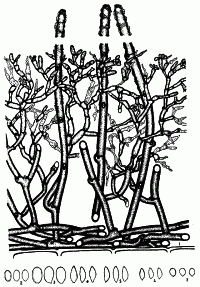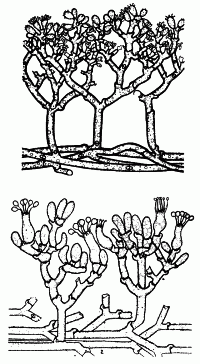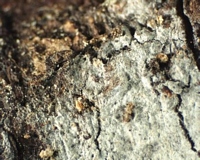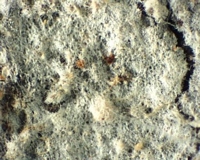|
 Sistotrema otagense Sistotrema otagense
SynonymsPellicularia otagensis
BiostatusPresent in region - Indigenous. Endemic
Images (click to enlarge)
Caption: FIG. 1. Section through the hymenophore of Pellicularia zealandica. x 750.
FIG. 2. Spores of Pellicularia zealandica.
FIG. 3. Spores of Pellicularia filamentosa.
FIG. 4. Spores of Pellicularia scabrida.
Caption: FIG. 1. Section through the hymenophore of Pellicularia subcoronata.
FIG. 2. Section through the hymenophore of Pellicularia otagensis.
All x 750. | 
Caption: Sistotrema otagense, BCP 644
Owner: B.C. Paulus | 
Caption: Sistotrema otagense, BCP 644
Owner: B.C. Paulus | | |
Article: Cunningham, G.H. (1953). Thelephoraceae of New Zealand. Part II: the genus Pellicularia. Transactions of the Royal Society of New Zealand 81(3): 321-328.
Description: Hymenophore annual, loosely attached, readily lifting, arachnoid-mucedinoid, forming small,
irregular areas to 4 cm. long; surface white, drying white, slightly tufted; margin thinning out,
white, loosely attached, arachnoid. Context composed of a few repent hyphae to 7 µ diameter,
wall 0.25 µ thick, branched, septate, with large clamp connections, fertile hyphae vertically
arranged, sparsely branched, bearing branchlets in cymes upon ends of which are carried
basidia and paraphyses. Basidia ventricose-eylindrical, 16-24 x 5-7 µ, bearing 4-6, sometimes
8 spores on sterigmata to 10 µ long. Spores pyriform or obovate, apiculate, 5-7 x 3.5-4.5 µ,
smooth, hyaline.
Habitat: HABITAT. Effused on decorticated decaying wood.
Distribution: DISTRIBUTION. New Zealand.
Notes: From others with clamp connections the species is separated readily by the large ventricose-cylindrical
basidia and small pyriform spores. The hymenophore is delicate, snow white,
loosely attached, and hyphae possess such delicate walls that they collapse readily. As they do
not stain with aniline blue, their structure is difficult to interpret. Large and conspicuous
clamp connections are present at all septa, and the repent hyphae branch at a wide angle.
Article: Stalpers, J.A.; Buchanan, P.K. (1991). Type studies of the species of Pellicularia and Peniophora described by G.H. Cunningham. New Zealand Journal of Botany 29(3): 331-340 (http://www.rsnz.org/publish/abstracts.php).
Notes: The spores of S. otagense are slightly smaller than Cunningham's measurements (5-7 x 3.54.5
µm). This brings it in the range of S. diademiferum (Bourdot & Galzin) Donk, a widely
distributed species growing on a large variety of woody substrates. Eriksson et al. (1984)
described the spores of S. diademiferum as ovoid to subglobose, (3.5-)4-5.5(-6) x (2.5-)3-3.5
µm; the spores from a French collection of S. diademiferum (LY 3.454) measured 4-5 x 2.5-3.5 µm.
Sistotrema otagense differs from S. diademiferum only in the broader basal hyphae
and the slightly different shape of the spores.
|